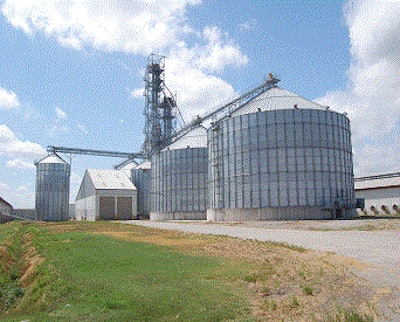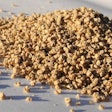
Several speakers at the Iowa Egg Industry Symposium in fall 2012 addressed the threat posed to layer flocks by three viral diseases that have recently been found in either wild birds or domesticated poultry in Mexico and the U.S. Each presentation pointed out the important role that good on-farm biosecurity can play in keeping hens safe from disease challenges.
Avian influenza outbreak in Mexico
Dr. Angela Pelzel-McCluskey, U.S. Department of Agriculture Animal and Plant Health Inspection Service Veterinary Services, gave an update on the highly pathogenic avian influenza H7N3 strain outbreak in the Mexican state of Jalisco in summer 2012. As of October 17, 2012, over 11 million hens had died from the disease and over 11 million were culled for a total loss of 22.3 million birds with an estimated economic loss of $638 million. There were 38 layer farms and six commercial hen breeder farms affected. The virus was also isolated in two wild birds (not migratory species). Mexican health authorities implemented a vaccination program with an H5 strain vaccine, and over 140 million doses were dispersed. By August 2012, over 128 million hens had been vaccinated. Pelzel-McCluskey said that she has several lingering concerns about this outbreak including the potential transport of birds illegally across the U.S. border; the possibility of the virus being carried back to U.S. farms by workers visiting family friends in high-risk areas of Mexico over the holidays; and finally, the relatively easy movement of trucks in and out of Mexico. Because of the H5 vaccination program in Mexico, it may be difficult for health authorities to detect further outbreaks of H7.
Infectious Laryngotracheitis outbreaks
Dr. George Boggan from CEVA Biomune provided a basic review of Infectious Laryngotracheitis disease, vaccination and types of vaccine, and provided an update of the Infectious Laryngotracheitis outbreaks in 2010-2012 in the states of Iowa, California, Missouri, Pennsylvania and Arizona. In Iowa, the Infectious Laryngotracheitis outbreak occurred in areas and farms with no previous history of Infectious Laryngotracheitis; the onset started in older flocks and spread quickly throughout the complex with significant high morbidity and mortality. It was an aggressive virus difficult to stop even with the chick embryo origin vaccines. CEVA is conducting bird challenge studies with various Infectious Laryngotracheitis isolates, and the traditional vaccines appear to be less protective. Boggan advised producers to be vigilant and on-guard to spot Infectious Laryngotracheitis early in their complexes. Of course, biosecurity of houses, people and birds is of the utmost importance.
Newcastle virus in wild birds
Dr. Bruce Thomsen, USDA Veterinary Services, Ames, Iowa, highlighted a serious disease risk in the Midwest: Newcastle disease in wild birds. There are a number of natural wildlife refuges in Minnesota, Iowa and the Dakotas that provide food and habitat to the double-crested cormorant, white pelican and ring-billed gull, all of which have been shown to carry Exotic Newcastle Disease, specifically the virulent form of the disease.
In 2012, wild white pelicans and cormorants had an outbreak of Exotic Newcastle Disease in Minnesota lake regions. Mortality of these wild bird populations peaked near 50 percent in some areas. Thomsen drove that point home with several graphic videos and pictures of fatalities and nervous disorders of wild pelicans and cormorants in Minnesota. He emphasized that if this virus were to transfer to commercial poultry, it would have to be reported to the OIE, which would put a strict restriction on the export of poultry products from the U.S.
Disinfectants such as Virkon and bleach will kill the virus. Biosecurity, specifically keeping wildlife away from our commercial flocks, is crucial in order to keep this disease out of poultry houses. This recent Exotic Newcastle Disease wild bird outbreak was in the neighborhood of the commercial layer industry, and it resembles some aspects of the 2002-2003 Newcastle Disease outbreak that occurred in backyard flocks in California, Arizona and Nevada.
Biosecurity the key to keeping viruses out
Following up these presentations on disease was a timely biosecurity presentation by Dr. Ian Rubinoff from Hy-Line International. He reviewed four aspects of a good biosecurity program starting with conceptualization, followed by structural aspects, operational aspects and finally cultural aspects. Rubinoff stressed that every producer, farm, complex, feed mill, supplier and egg processor needs to have a biosecurity program.
Salmonella enteritidis incidence in environmental samples low
Dr. Timothy Frana, Veterinary Diagnostic Laboratory, Iowa State University, presented statistics on the laboratory’s Salmonella enteritidis testing dating from July 9, 2010, to October 11, 2012, during which time the lab tested over 26,750 environmental samples from 2,314 submissions and 20,601 egg pools. Only 1.71 percent of the 26,789 samples were positive for Salmonella enteritidis, and only 9.72 percent of the 2,314 submissions had any Salmonella enteritidis positives. Only one egg pool sample was positive for Salmonella enteritidis, and that sample was taken very early on during the summer of 2010. This was considered good news when compared to all of the bad news received regarding potential viral disease challenges for layers. Salmonella enteritidis control has come a long way in the last two years, and the positive results of producer efforts to comply with the FDA Egg Safety Rule were evident in the statistics presented.
Feeding hens
Dr. Kristjan Bregendahl, Sparboe Farms, presented an excellent and detailed review of pullet and laying hen nutrition. Key take-home messages included the importance of feeding to meet target pullet weights and uniformity, emphasis on extra calcium in the pre-lay diet and starting layer diets at the same time egg production starts, providing high density (energy, calcium, phosphorous, and amino acids) diets at the start of lay to meet breeder specifications, keeping amino acids and protein in control later in lay to keep egg weight in check, and provide a less soluble form of calcium late in lay for shell quality.
The commercial egg industry will continue to be challenged by exotic and highly pathogenic disease threats during a time of record feed costs. The incidence of Salmonella enteritidis-positive environmental samples is decreasing, and good management and biosecurity procedures have helped to keep disease outbreaks under control.






